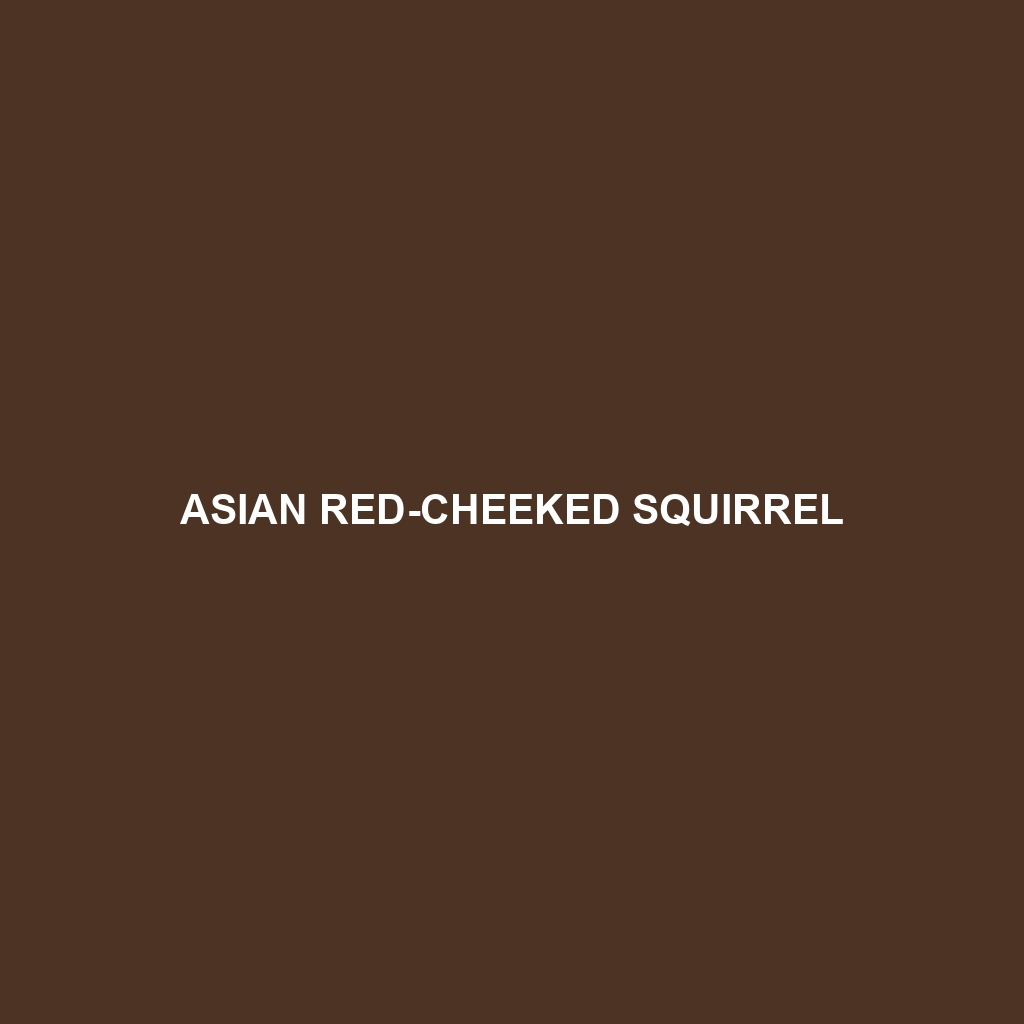Asian Red-cheeked Squirrel Description
Common Name: Asian Red-cheeked Squirrel
Scientific Name: Callosciurus erythraeus
Habitat
The Asian Red-cheeked Squirrel is primarily found in various regions across Southeast Asia, particularly in countries such as Vietnam, Thailand, and Malaysia. This species inhabits a range of environments, including tropical and subtropical forests, urban areas, and often resides in woodlands and gardens. They are commonly spotted in areas with abundant trees, which provide both cover and food sources.
Physical Characteristics
Asian Red-cheeked Squirrels are medium-sized rodents, typically measuring between 20 to 30 cm in body length, with a bushy tail that adds another 15 to 25 cm. They are characterized by their distinctive reddish-orange fur on the cheeks, which contrasts with their dark brown or grayish bodies. Their large eyes and prominent ears further enhance their adorable appearance. These squirrels possess sharp, curved claws that aid in climbing and navigating through trees.
Behavior
These squirrels are diurnal and primarily active during the daytime, engaging in activities such as foraging, grooming, and social interactions. They are known for their agility and acrobatic skills, often jumping between branches and scaling tree trunks with ease. The Asian Red-cheeked Squirrel is also social, typically seen in small groups, and communicates through a variety of sounds and tail movements.
Diet
The diet of the Asian Red-cheeked Squirrel mainly consists of fruits, nuts, seeds, and occasionally insects. They have a particular fondness for acorns and various types of seeds, which they store for later consumption. Their feeding habits play a crucial role in seed dispersal, making them important for maintaining the health of their ecosystem.
Reproduction
The breeding season for the Asian Red-cheeked Squirrel typically occurs twice a year, during the warmer months. After a gestation period of approximately 30 to 40 days, females give birth to litters usually comprising two to four young. The young are born blind and hairless, becoming independent at around 10 weeks of age. Parental care is primarily the responsibility of the female, who fosters a strong bond with her offspring.
Conservation Status
Currently, the Asian Red-cheeked Squirrel is classified as ‘Least Concern’ by the International Union for Conservation of Nature (IUCN). However, habitat loss due to deforestation and urbanization poses a potential threat to their populations in certain regions.
Interesting Facts
Did you know that the Asian Red-cheeked Squirrel is known for its remarkable memory? They can remember the locations of hidden food sources for several months, which is essential for their survival during food scarcity. Additionally, they are adept climbers and can leap up to 10 times their body length!
Role in Ecosystem
The Asian Red-cheeked Squirrel plays a vital role in its ecosystem as a seed disperser. By burying nuts and seeds, these squirrels inadvertently aid in the growth of new plants, contributing to forest regeneration. Their presence also supports various predators, including birds of prey and small carnivores that rely on them as a food source.
